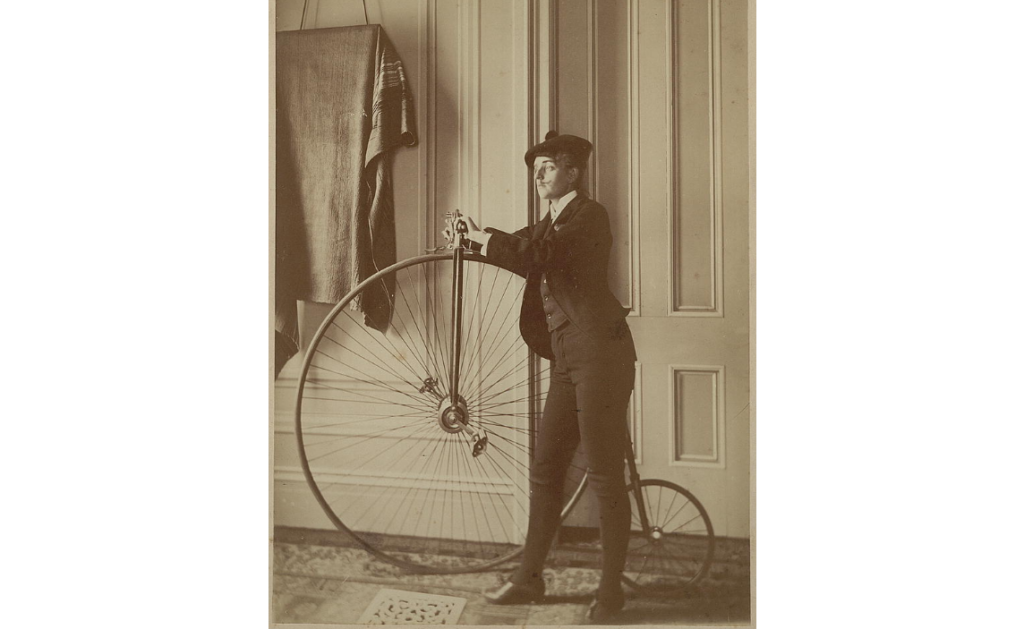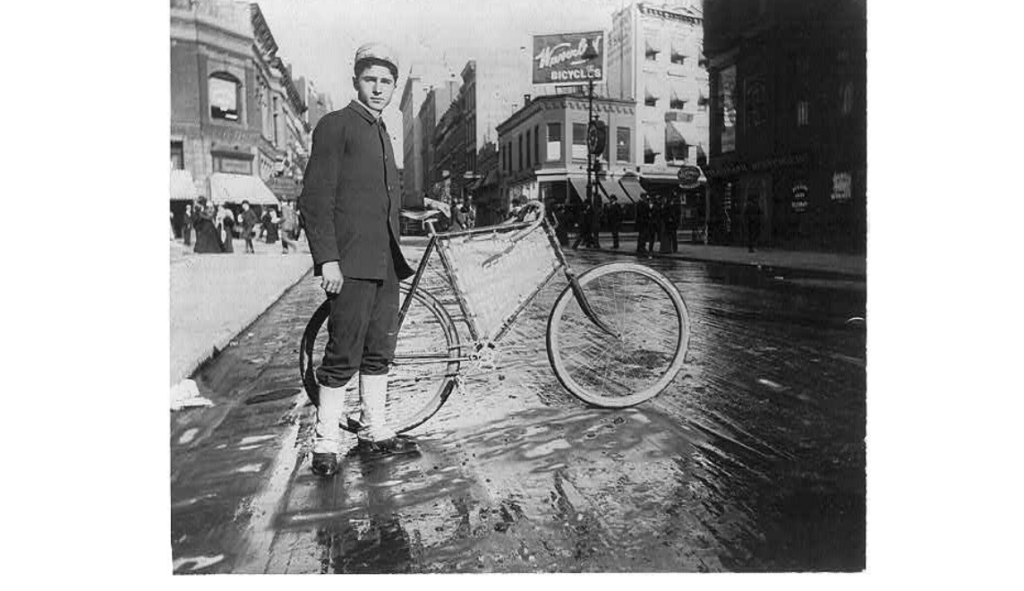- 1 – The Yamaha PAS
- 2 – A Pre-Litteram Bicycle
- 3 – The Safety Bike
1) The Yamaha PAS
Looking at this bicycle, one might think it’s just like any other electric bike.
But when Yamaha created this bicycle, they invented something that has been copied by every other electric bike manufacturer in the world: the “PAS,” or Power Assist System.
To understand the importance of this innovation, let’s briefly explain how the PAS works.
In this system, the energy that powers the bicycle comes from the force applied to the pedals. Therefore, it is not an e-bike that “goes on its own” without the use of our muscles, but our effort is significantly reduced.
At the time of its invention, in 1993, some said the sensation was like “someone pushing your back, even on challenging climbs.”
In fact, the Yamaha PAS is none other than the ancestor of pedal-assisted bicycles!
Although it was not the first model to use electric power, this model inspired all those bikes today that provide extra help only when you are pedaling.
Despite its considerable weight (31 kg) and improvable battery life (20 km), the Yamaha PAS had a reasonably accessible price (€860) and revolutionized the daily commutes of many Japanese people.
It took very little time (a couple of years) for this innovative technology to spread throughout Europe!

2) A Pre-Litteram Bicycle
Have you ever wondered who invented the bicycle?
Well, the first bicycle—or perhaps, the first “idea of a bicycle”—belongs to a German aristocrat named Karl Von Drais, who created the “Draisine” in 1817.
The Draisine was a true prototype of modern bikes, and indeed, it was very elementary.
This rudimentary two-wheeled wooden vehicle didn’t even have pedals; to operate it, you had to push off the ground with your feet (with the side effect of quickly wearing out your shoes!).
Unfortunately, the Draisine didn’t achieve the success its inventor expected; Drais was convinced his bike would replace horses and become the most common means of transportation.
Becoming known as the “hobby-horse,” this prototype was destined to become a toy for a wealthy few, and quickly lost its appeal.
The bicycle would not see the first pedals until 1863, and even those remained very primitive and dangerous. More complex and safer chain and pedal systems would arrive later.

3) The Safety Bike

The reason for its size was the insertion of the pedals, which pivoted directly on the wheel (modern chains had not been invented).
Although it was undoubtedly faster than previous models, the penny-farthing caused quite a few accidents and injuries to its riders! Just consider the fact that the rider’s feet never touched the ground while riding.
Responding to the need for a safe yet fast vehicle was an English inventor, John Kemp Starley.
In 1871, the Safety Bike was born: a light bicycle whose wheels were equal in size, with rear-wheel drive, central pedals, and an elementary chain system.
In short, the concept of the bicycle as we understand it today comes from this model!
The design of all modern bicycles originates from the Safety Bike; this model sparked a revolution in the world of cycles, causing a “Bike Boom”—an explosion of market interest in bikes—which the New York Times also wrote about, defining the Safety Bike as “an extension of personal liberty and power, a sensation little short of having wings.”
With his invention, John Kemp Starley supplanted the penny-farthing.
All the bikes we ride today are merely improvements on the same model, which achieved a popularity no other bicycle had seen before.
Perhaps the next time you hop onto your beloved bike, you’ll think back to the Safety Bike, and it will feel like you’re riding a piece of history!

And you, had you ever thought about the history of the bicycle?
We think it’s truly fascinating. By the way, if this article has inspired you to explore a region rich in history and culture without abandoning your bicycle, I have the solution for you!
Click below:
www.trebbianogravel.it/pacchetti/
You can combine your passion for two wheels with the discovery of sensational villages, unique fortresses, and unrepeatable landscapes.
I hope this journey through the history and culture of the bicycle has inspired you to further explore this fascinating topic!
If you are a bicycle enthusiast or know someone who is, don’t hesitate to share this article with them.
Happy cycling!



